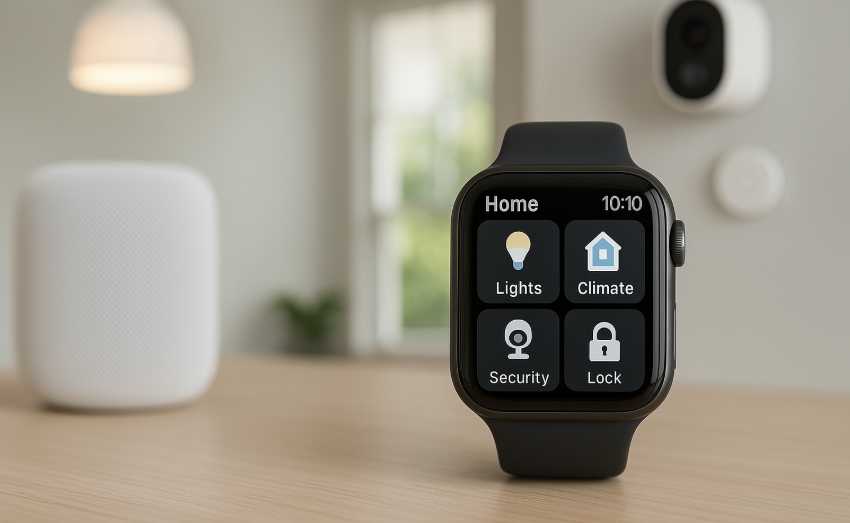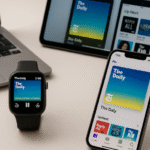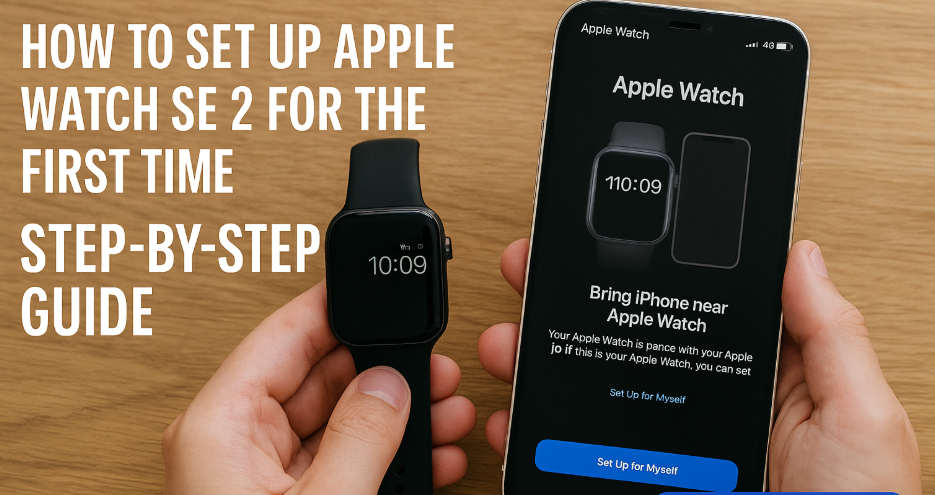In the age of smart homes, having a centralized control hub for all your devices is more important than ever. The Apple Watch, often seen as a fitness and notification tool, is also a powerful device for managing your smart home. Thanks to its integration with Apple’s HomeKit and Siri, the Apple Watch can control everything from lights and thermostats to security cameras and smart locks. In this guide, we’ll show you how to leverage your Apple Watch for smart home control and turn it into your personal automation hub.
For more details on how the Apple Watch fits into your digital lifestyle, check out this comprehensive Apple Watch SE 2nd Gen review.
1. Setting Up HomeKit on Your Apple Watch
Before you can start controlling your smart home with your Apple Watch, you need to set up HomeKit. HomeKit is Apple’s smart home framework that allows you to control compatible devices directly from your iPhone, iPad, and Apple Watch. Here’s how to set it up:
- Step 1: Make sure you have the Home App installed on your iPhone. This app serves as the control center for all your HomeKit-enabled devices.
- Step 2: Open the Home App on your iPhone and follow the on-screen instructions to set up your smart home accessories. You’ll need to scan QR codes or enter setup codes provided with your devices.
- Step 3: Ensure your Apple Watch is paired with your iPhone and has the Home App synced. Once this is done, you’ll be able to control your devices directly from your wrist.
2. Using Siri for Hands-Free Smart Home Control
One of the most convenient features of using your Apple Watch to control your smart home is the integration with Siri, Apple’s voice assistant. You can use Siri to adjust settings on your smart devices without needing to touch a screen. Here’s how it works:
- Step 1: Activate Siri by either saying “Hey Siri” or pressing and holding the Digital Crown on your Apple Watch.
- Step 2: Give a command like “Hey Siri, turn on the living room lights” or “Hey Siri, set the thermostat to 72°F.”
- Step 3: Siri will immediately execute your request, whether it’s adjusting your thermostat, controlling lights, or locking your front door.
With Siri’s voice recognition, you can quickly make adjustments to your smart home, hands-free, without ever having to pick up your phone.
3. Controlling Lights and Thermostats
Using your Apple Watch to control lighting and temperature is as easy as opening the Home App. Here’s how to make adjustments:
- Controlling Lights: Open the Home App on your Apple Watch, and you’ll see your connected lights displayed in the app. You can tap to turn them on or off, or use the sliders to adjust the brightness.
- Adjusting Thermostats: If you have a smart thermostat like Nest or Ecobee, you can control it directly from the Home App on your Apple Watch. Simply tap on the thermostat device, and use the slider to adjust the temperature.
These controls provide a seamless and instant way to manage the comfort and ambiance of your home, right from your wrist.
4. Monitoring Security Cameras
Another powerful feature of the Apple Watch is its ability to display live feeds from your home security cameras. If you have HomeKit-enabled cameras like Logitech Circle View or Arlo, you can access live footage right on your watch. Here’s how:
- Step 1: Open the Home App on your Apple Watch and scroll to find your cameras.
- Step 2: Tap on the camera you want to view to watch the live feed. If you have multiple cameras, you can swipe between them quickly.
Monitoring security cameras on your Apple Watch is incredibly convenient, allowing you to check on your home while on the go.
5. Managing Smart Locks and Doors
Smart locks are an essential part of home automation, and controlling them through your Apple Watch is a breeze. If you have a smart lock like August or Schlage, you can lock or unlock your doors directly from the Home App. Here’s how:
- Step 1: In the Home App on your Apple Watch, find your smart lock in the list of accessories.
- Step 2: Tap to lock or unlock the door with a single tap.
You can even set up automation rules, so your doors automatically lock when you leave the house or unlock when you arrive, all controlled through your Apple Watch.
6. Setting Up Smart Home Automation with Apple Watch
The ultimate power of controlling a smart home with your Apple Watch comes from automation. With automation, you can set up triggers and actions based on your behavior, such as:
- Triggering scenes: Set up a scene like “Good Morning” that adjusts the thermostat, turns on the lights, and plays music.
- Time-based actions: Set your lights to turn off at a specific time each night or your thermostat to lower when you leave home.
To set up automation:
- Step 1: Open the Home App on your iPhone.
- Step 2: Tap on the Automation tab and follow the prompts to set up rules like “When I leave home, turn off the lights.”
Once set up, these automations will run seamlessly without needing to manually control your devices, all powered by your Apple Watch.
7. Troubleshooting Common Issues
While using your Apple Watch for smart home control is relatively simple, there may be times when things don’t work as expected. Here are some troubleshooting tips:
- Ensure that all devices are on the same Wi-Fi network: Your Apple Watch needs to be connected to the same Wi-Fi network as your smart home devices to work properly.
- Check your HomeKit setup: If devices aren’t showing up, make sure they’re correctly added to HomeKit and that iCloud syncing is enabled.
- Restart your devices: Sometimes, restarting your Apple Watch, iPhone, or smart home devices can resolve connectivity issues.
Conclusion: Mastering Your Smart Home with Apple Watch
By following the steps outlined in this guide, you can turn your Apple Watch into a powerful tool for controlling your smart home. From adjusting lights and thermostats to monitoring security cameras and locking doors, your Apple Watch can handle it all, giving you complete control at your fingertips. With seamless integration through HomeKit and Siri, managing your smart home has never been easier or more efficient.
For more helpful tips on integrating your Apple devices, check out these related guides:
- How to Effortlessly Move App Data Between Mac and iPhone
- How to Manage Mac Photos Across the Entire Apple Ecosystem
- How to Seamlessly Integrate AirPods into Your Work-from-Home Setup
- How to Set Up Your iPhone as the Central Hub of Your Apple Ecosystem
- How to Sync Apple Watch Podcasts and Audiobooks Across Devices







